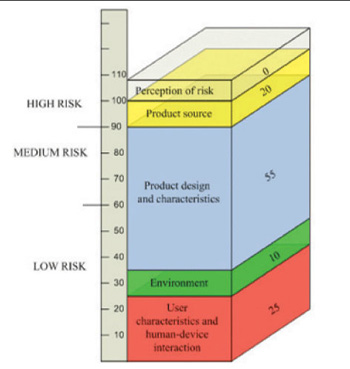The Electrical Safety Authority (ESA) is responsible for public electrical safety in Ontario, Canada, and operates as a Delegated Administrative Authority of the Government of Ontario. As part of its mandate ESA is given the authority to enforce the Ontario Electrical Safety Code (OESC). The Code defines the standard for safe electrical products and installations in Ontario, and when followed; protects public, workers, contractors and business owners.
What do we consider as Unsafe Electrical Products?
ESA considers three product categories defined as Unsafe Electrical Products:
- Unapproved electrical products
- Electrical products with suspected counterfeit manufacturer or certification label
- Certified but unsafe electrical products
Unapproved electrical productsare the products that have not been certified by a recognized certification agency. The OESC requires products to be certified by one of the recognized certification organizations accredited by the Standards Council of Canada.
Electrical products with a suspected counterfeit labelare products that bear a counterfeit certification label, or fake manufacturer label. For the past several years, ESA has worked in coalition with certification and enforcement agencies, along with manufacturers in various investigations. In all, counterfeit extension cords, power bars, lighting fixtures, breakers, power tools, etc., were discovered. For example, extension cords with counterfeit certification labels are most often identified with undersized wires that will overheat and fail. Very often, the product enclosure is made of flammable material. ESA’s biggest concern is that the users that have purchased those products may not be aware of the potential hazard these products present to their homes and families.
Certified but unsafe electrical productsare the products that have been certified by a recognized certification agency; however, they have failed in an unsafe manner or have some identified safety issues. In these cases, ESA initiates a product incident report (PIR). Some reported products have initiated a product recall or safety advisory.
Response process based on the risk assessment

Figure 1. Potential electric shock and fire hazards associated with unapproved infrared saunas
In order to manage the unsafe products issues, it is important to have a defined response process in place. This response process should not only allow for the initial assessment of potential risk elements, but also for prioritization, implementation of mitigating actions, periodic reassessment of risk, and mitigation priorities.
Therefore, ESA developed a response process for unsafe electrical products based on risk assessment. Unsafe products are rated with corresponding low to high risk assessment to determine the response strategy. High-risk products receive priority action and aggressive response strategies.
Identifying risk criteria for unsafe electrical products was a challenging task. The challenge lay within many factors that had to be considered for assessment. ESA staff, manufacturers, certification agencies plus other external stakeholders as well as other Canadian Provincial jurisdictions had an opportunity to comment and aid in the development of ESA’s risk assessment criteria for electrical products.

Figure 2. Recognized Agency Certification markings
Hazard identification is a key element in risk assessment. Hazard is defined as “the potential to cause harm.” Identification and analysis of electrical products, their mode of operation and failure, are essential in ensuring that all relevant hazards and potentially hazardous situations are addressed. It is important to consider all stages in the product life including installation, operation, maintenance and failure. Product standards require that if a product fails, it has to do so in a safe manner. The hazards that were considered included: shock, fire, fumes, heat, noise, and toxic substances.
Five Risk Groups are considered:
- User characteristics and human-device interaction
- Environment
- Product design and characteristics
- Product source
- Perception of risk
User characteristics and human-device interaction
Risk factors considered under this category are:
- users qualifications/skill level,
- exposure, and the
- amount of personal contact/interface.
For example, electrical products used for hair care (curling irons) are rated as intensive in the category that considers the amount of contact between the human and a product. On the other hand, generators or patio string lights will be rated as minor or minimal in the same category.
Environment
Where is the product used? Risk factors considered under this category are:
- locations, and
- conditions, such as weather, humidity, air quality and temperature.
Product design and characteristics
Risk factors considered under this category are:
- adequacy or appropriateness of design and materials, equipment failure mode, product application, and
- product certification.
Electrical products that have not been evaluated by any certification agency will receive maximum points in this category.
Product source
Risk factors considered under this category are:
- manufacturer information,
- retailer information, and
- purchasing restriction versus availability.
Information based on past interaction and availability of a quality control program, such as ISO 9001, will be a deciding factor in determining the low or high point allocation.
Perception of risk
An individual’s perception of risk is amplified if the product or product incident has been or is:
- implicated in media,
- a catastrophic incident,
- a health care product,
- an incident involving a child, and
- product recalls and safety alerts are on file.

Figure 3. Recognized Field Evaluation markings
This category is ESA’s attempt to understand and anticipate people’s extreme aversion to some hazards, and their indifference to others. The items listed were identified to play a prominent role in decisions that people make. Experts tend, for a variety of good reasons, to focus on measurable, quantifiable attributes of risks. The public, on the other hand, focuses less on quantitative aspects of risk, and responds to the qualitative, and attributes like fairness and controllability.
Risk assessment for unapproved infrared sauna
In one of the investigations, it was identified that a potential electric shock and fire hazards exists associated with infrared saunas. Information collected identified the following: the item was unapproved; it was combustible; and had exposed live connections. For more information, see ESA safety alerts,http://www.esasafe.com/Alerts.php
Based on the risk assessment criteria identified above, the rating for unapproved infrared saunas was assessed and figure 1 represents the risk factor.
The total score for the unapproved infrared saunas is 100, making them a high-risk product based on ESA’s risk assessment.
The following were some key events that occurred once the assessment was identified as high risk: ESA identified the hazard to the manufacturer and requested immediate corrective action; laid charges against one manufacturer that did not comply by continuing to distribute unsafe saunas; and ESA issued a Safety Flash notice.
How does response process work?
Unapproved products.Upon receiving a complaint or information about the unapproved product, ESA would undergo a risk assessment and depending on the findings, initiate a response strategy based on the evaluated risk assessment. If the risk is identified to be low, ESA’s response may be a warning letter to the manufacturer or retailer/distributor. In the warning letter, ESA requests that the individual stop distributing or using the unapproved product, and confirm in writing compliance with the approval requirements. The party is advised that failure to respond and meet approval requirements may require ESA to conduct a formal investigation, whereby charges may be laid. A person or company that contravenes the OESC requirement for the product approval may be prosecuted and upon conviction, is subject to fines up to $50,000 and/or one-year imprisonment.
High-risk productsreceive ESA’s aggressive response. The response includes a warning letter, inspector verification, and immediate response from manufacturer or retailer. ESA will require immediate corrective action and inform the public. They will consider issuing a Safety Alert, preferably in conjunction with the manufacturer /distributor.
Products with a suspected counterfeit manufacturer or certification label
The response process for products with suspected counterfeit manufacturer or certification label involves cooperation between certification agency, manufacturer (if known), and the Royal Canadian Mounted Police (RCMP). The critical step in the process is confirmation from manufacturer or certification agency that the label is, in fact, counterfeit. The process continues following the risk assessment model but with differences in requested response time between high, medium, and low risk products. ESA’s priority goal is to remove the products with counterfeit labels from the market.
Certified but unsafe electrical products
After receiving a complaint about failures or safety issues of certified product, ESA initiates the categorization of the risk assessment, which will determine the response strategy. However, the process starts with issuing a product incident report (PIR) to the certification agency that certified the product. The certification system in Canada is based on the third party certification; therefore the certification agencies are responsible to investigate safety issues and compliance to safety standards. Recently, ESA has started sending PIRs to manufacturers and distributors, so that they are aware at the very beginning about the concerns. Recent experience shows that working with manufacturers and distributors expedites the investigation.
If several unsafe product failures have been reported, the product may be rated as high risk; the certification agency, manufacturer or distributor may be advised to take corrective action with products still currently on the market as well as with items that are in the consumer’s possession. This might require a safety alert, retrofit and/or recall issued to the public.
How does ESA track unsafe electrical products issues?
ESA has developed an Unsafe Products Database. From October 2005, ESA has responded to over 200 complaints about unsafe products. Its database contains information about the products, manufacturers and retailers. Its database reflects response process and identifies resolution. More than 80 percent of unapproved product complaints are closed. The file closure suggests that the unapproved products were removed from the Ontario stores; unapproved products were certified or field-evaluated. In a few cases, manufacturers or distributors who did not comply with the product approval requirements were prosecuted and charged. Only about 5 percent of the complaints were categorized as high risk requiring quick and direct intervention from all affected parties.
Informing the Public
In the last several years, ESA issued more than 20 Safety Alerts and Flash Safety notices about unsafe electrical products. ESA has established close working relationships with their safety partners in Ontario and across North America.
ESA’s recently redesigned web site has a section that is dedicated to Unsafe Electrical Product. The section “unsafe electrical products” provides information about regulations that define approval requirements; recognized certification and field evaluation marks and exceptions to approval requirements.
This link also contains Recalls (gathered from U.S. Consumer Product Safety Commission, CSA, UL, and manufacturers), Safety Alerts and Flash Notices. This ESA web site section represents one of the most useful sources in Canada for electrical product recalls and safety alerts. The information is updated on a regular basis as information is received.
For more information about ESA’s unsafe product initiative, visit http://www.esasafe.com/.

![Figure 1 – [Twist-on connectors specifically designed for copper-clad aluminum splicing. Image Credit: IDEAL Electrical]](https://iaeimagazine.org/wp-content/uploads/2025/08/Fig1_CCATwister.png)









Find Us on Socials